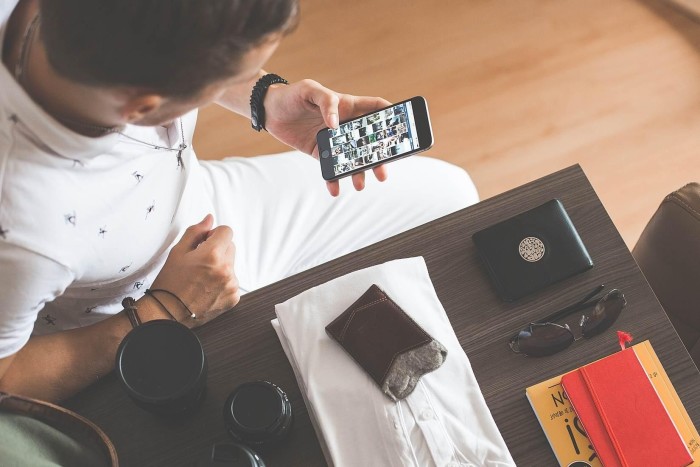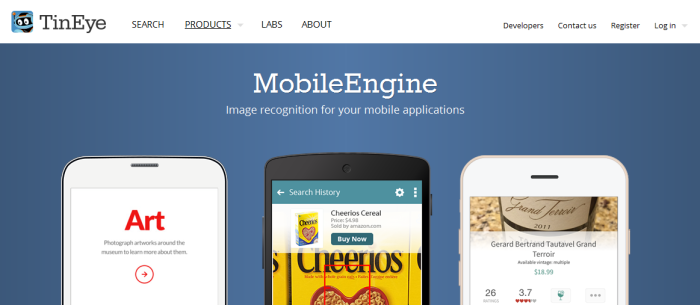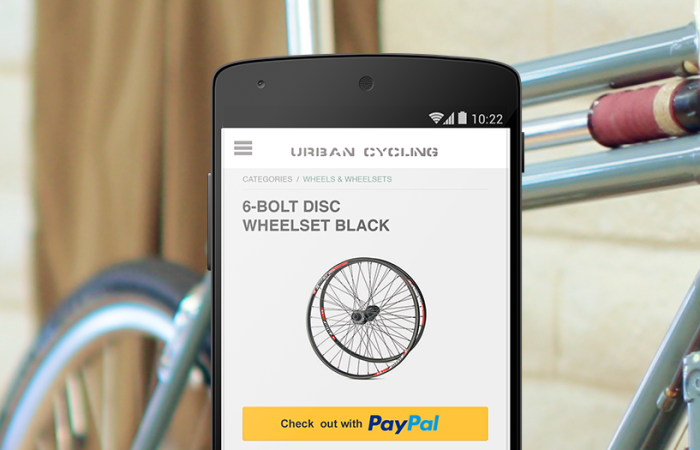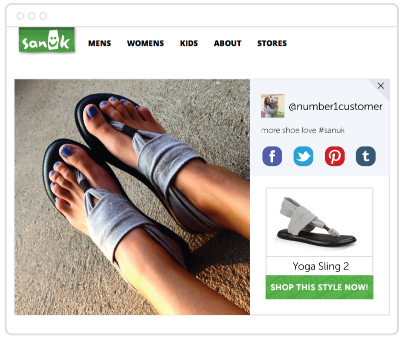7 Ways to Drive Mobile Conversions for Ecommerce Businesses
In 1997, Dell reached a huge milestone. It was the first company to sell $1 million worth of product online. The following year, the Ecommerce industry as a whole grew to $8 billion in annual sales. At the time, consumers relished the opportunity to purchase goods they wanted from around the world, and have those packages delivered straight to their door. Shopping online was affordable, convenient and easy. And instead of cannibalizing brick-and-mortar sales, digital shopping encouraged people to buy more of the products they always wanted in-store and online.
Last year, e-retail sales hit $305 billion, according to the U.S. Commerce Department. Over the past two decades, the World Wide Web has become host to a robust and limitless marketplace for people to find absolutely anything their hearts desired. But now, there is a new trend that stores must pay attention to. The adoption of smartphones and widespread use of cellular data has created a new category of shopper who powers growth in mobile commerce. By 2019, U.S. mobile retail sales are estimated to reach nearly $150 billion, approximately double the sales estimate for 2015.
To capitalize on this trend, Ecommerce companies are shifting their focus towards mobile audiences but in order to convert those eyeballs into sales, they need to build flawless mobile shopping experiences. To do just that, here are seven ways online stores can drive mobile conversions.
Add exclusive products and discounts
Currently, consumers complete more of their purchases on desktop computers than they do smartphones and tablets. Research from eMarketer suggests that, in May 2015, Ecommerce conversions on desktop computers averaged 3.35%, while tablet users purchased products at a 2.52% rate and smartphone users checked out 1.18% of the time. Although the study also estimates 53% of U.S. Ecommerce traffic came from mobile devices (while 47% came from desktop computers), shoppers are reluctant to purchase products on their mobile devices.
At the moment, mobile users are window shoppers. They primarily use their phones to research products and compare prices. When they are ready to purchase, they postpone check out until they reach their desktop – if they remember to complete their purchase at all.
Convenience is the main reason why shoppers buy things while on-the-go. Buyers simply lack the motivation to move their shopping habits to mobile. To incentivize more site visitors to complete their order on their smartphones and tablets, offer mobile-only products and discounts. Short-term, this helps stores boost sales and reduce shopping cart abandonment. Long-term, it conditions consumers to feel more comfortable with mobile purchases.
Create a fun shopping experience
Store owners make the mistake of believing an unmodified desktop shopping experience ports well to mobile devices. Not only should their stores be mobile-responsive but they should include mobile-only features that create a fun shopping experience for customers. For example, you may add the ability to:
- Participate in live chat with customer service teams
- Scan physical product barcodes
- Save products for later
- Suggest alternative items to purchase
- Use image recognition software to find the same (or similar) products online
When users shop on their home computers, the experience is seamless. Customers can open multiple tabs at once to view a wide variety of products, one after the next. On mobile devices, the experience is clunkier. Because smartphones and tablets do not have the same computing speeds, you need to build a fast and reliable mobile shopping experience.
The fact is: “Almost half (40%) of consumers don’t feel comfortable shopping online and it doubles to 80% when we’re talking about shopping on mobile. This may look dismal, but it means that your webstore not only needs to be mobile friendly, but also wow shoppers on whichever screen they prefer,” writes Angelica Valentine of Bigcommerce.
Valentine also recommends, “Add interactive tools that aid customer purchase decisions. This can help retailers see up to a 40% boost in conversions. This is especially important for Ecommerce because you can’t be there like a salesperson can in a brick and mortar store.”
Leverage your analytics
Your customers behave differently on mobile. The same call-to-actions (CTAs) that perform well on desktop browsers may feel almost invisible to shoppers on their smartphones and tablets. Historically bestselling products may similarly underperform with a mobile audience. Carefully track device-level analytics to see where the biggest leaks in your conversion funnel are. A high mobile bounce rate may suggest areas for improvement on your mobile home page. Short session durations may mean you will need to add more engaging copy and images to capture users’ attention. Savvy store owners let data drive their decision-making when optimizing their store’s mobile shopping experience.
With data, brands can unlock a treasure trove of information that reveals how their mobile audiences react to certain offers, products and promotions. For example, customers may be more likely to use a certain coupon over others when shopping on-the-go (Hint: straightforward promocodes such as “freeshipping” are easier to redeem than “XVE34”). Specific products may sell better with mobile shoppers too. Items that are rarely added to shoppers’ carts may need better assets (copy or images) or should be removed entirely.
Provide safe and simple payment methods
In 2013, credit card fraud became an $11 billion industry, up from $8 billion in 2012. To protect themselves, shoppers have become vigilant about how and where they use their credit cards. A consequence of this is buyer reluctance to shop on their mobile phones. Data from comScore suggests the biggest reason why people do not purchase on mobile is because they “do not feel secure providing payment information over mobile devices.”
To create trust — and improve conversion rates — empathetic Ecommerce managers integrate reliable payment apps into their mobile store. Examples include:
- Google Wallet
- Passbook
- PayPal
- LevelUp
Each service allows consumers to complete their purchase using a linked credit card or bank account, making check out a fast and easy process. This solves another crucial problem mobile stores face: the cumbersome task of manually inputting credit card information.
Feature user generated content
Using social proof, brands can instill confidence among hesitant customers. Testimonials and user reviews reinforce a product’s value for shoppers. Mobile consumers are no exception. But to create an experience that complements their mobile browsing behaviors, brands must feature photos of real customers using their products.
On Facebook, Instagram and Pinterest, loyal customers post photos about your brand every day. According to Pixlee, “These photos are visual endorsements that influence customer buying decisions.” Research from the visual marketing platform also shows customer photos increase engagement rates by 30% and conversion rates by 5%.
Employ SMS marketing
Earlier this year, MobileSQUARED released a study which revealed 90% of mobile users read text messages within three minutes of receipt. Unlike email, which can sit in a user’s inbox for hours – even weeks – at a time, SMS is a highly responsive communication medium. In fact, promotional text messages are six to eight times more engaging than email.
Part of the reason is: “SMS is precise and to the point,” explains the VentureBeat staff. “When you only have 160 characters to work with, you learn how to become economical with words…. Additionally, SMS is permission-based. The customers you interact with have given you permission to contact them through an SMS platform. Customers who opt in to receive information are more likely to take in that message rather than ignore it — the fate of millions of emails.”
The primary use cases for SMS are obvious yet brilliant. “Text message marketing also provides a lucrative space for short-term promotions and flash sales. Additionally, you can offer freebies to entice customers to come to your site and purchase additional goods,” says Adestra.
Market to non-Millennial males
Millennials are smartphone savvy but remain resistant to mobile shopping. On the other hand, “Boomers and seniors have adopted mobile commerce,” shares Business Insider’s Cooper Smith. “One in four mobile shoppers in the U.S. is over the age of 55.” For brands eager to increase their mobile conversions, market to an older audience.
To further increase your odds of converting mobile traffic into sales, target men. Smith adds, “Men are more likely to make purchases on mobile devices. Fifty-seven percent of women made a purchase online in 2013, compared to 52% of men, according to a study conducted by SeeWhy. But 22% of men made a purchase on their smartphones last year, compared to 18% of women.”
Final thoughts
As smartphone and tablet technologies evolve, so will consumer’s habits and their sentiments towards mobile shopping. To position your Ecommerce store for long-term success, build a mobile site and shopping experience customers can get excited about.




